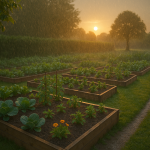🌿 The Garden Note 🌿
🗺️ The Importance of Garden Mapping🗺️
By Raquel Henchy — Keeper of Seeds & Stories
When it comes to gardening, success doesn’t just come from good soil and sunshine — it also comes from planning. One of the most useful tools every gardener can use is a garden map.
Whether you’re growing in raised beds, rows, or containers, mapping out your garden before planting sets you up for a more abundant, beautiful, and stress-free season.
🌿 What Is Garden Mapping?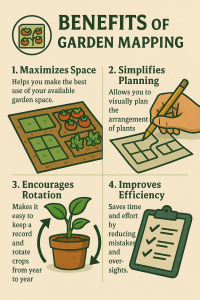
Garden mapping is simply creating a visual layout of your garden space before planting. It can be as simple as a sketch in a notebook or as advanced as a digital plan. A map helps you organize where each crop will grow and allows you to make thoughtful decisions instead of planting on the fly.
🌻 Why Garden Mapping Matters
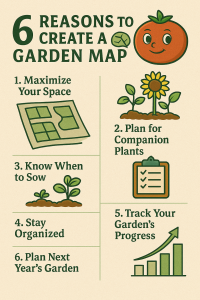 1. Maximizes Space
1. Maximizes Space
No more guessing where to put your tomatoes or realizing too late that your cucumbers crowded out your lettuce. Mapping ensures you use every inch efficiently.
2. Helps with Crop Rotation
Planting the same crop in the same spot year after year can drain the soil and attract pests. A map lets you track what grew where so you can rotate properly, keeping soil healthy and plants strong.
3. Prevents Overcrowding
It’s easy to underestimate how large plants will get. A map keeps you from planting too close together, improving airflow and reducing disease.
4. Keeps Sun & Shade in Mind
Tall plants like corn or sunflowers can cast shade on smaller crops. Mapping ensures each plant gets the right amount of light.
5. Simplifies Succession Planting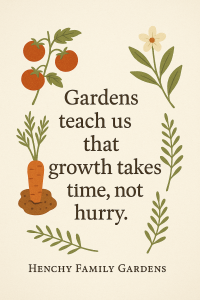
Want to plant spinach in spring, then beans in the same spot later? A map helps you plan out the timing and space for multiple plantings.
6. Tracks Your Progress Year to Year
Your map becomes a garden diary. Looking back helps you see what worked, what didn’t, and how to improve next season.
🥕 How to Make a Garden Map
- Measure Your Space – Note the dimensions of your beds, rows, or containers.
- Sketch It Out – Draw a simple layout with boxes or shapes representing your growing areas.
- Mark Permanent Features – Trees, trellises, walkways, and greenhouses should go in first.
- Plan Plant Placement – Place taller crops where they won’t shade smaller ones. Keep companions together (like basil near tomatoes).
- Consider Timing – Leave room for succession planting — early crops out, summer crops in.
- Label Clearly – Write crop names on the map so you know exactly what’s where.
🌸 Tools You Can Use
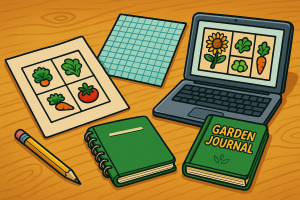
- Paper & Pencil – The simplest way!
- Graph Paper – Makes spacing easier.
- Garden Journals – Many include mapping sections.
- Online Tools & Apps – Some garden apps let you drag and drop plants digitally.
🌿 Final Thoughts
Garden mapping is more than just organization — it’s a way to set yourself up for success, abundance, and peace of mind in the garden.
Think of it as your blueprint for a fruitful season. 🌻
✨ Just like tending your plants, tending your plan brings better harvests.
Share your garden map with us! Tag @henchygardens or visit
HenchyGardens.com 🌿henchyfamilygardens

